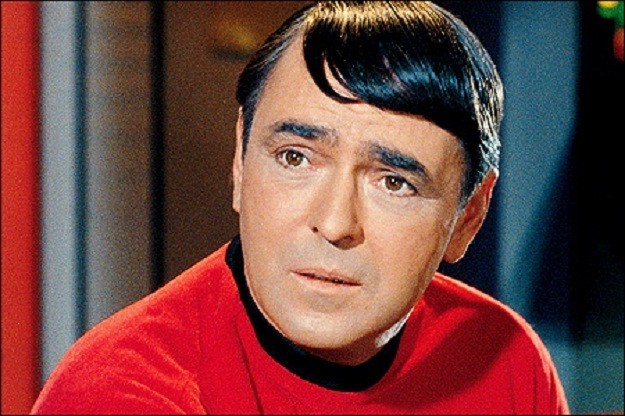He saw action during WWII and in outer space. His exploits inspired many to enter the engineering profession, while one followed him to the moon. He speaks with a Scottish accent even though he is not Scottish. As far as the Scots are concerned, he has yet to be born.
James Montgomery “Jimmy” Doohan was born to Irish immigrants in Vancouver, British Columbia, Canada on March 3, 1920. His father, William, was a pharmacist who apparently invented a form of high-octane gas in 1923. Whether or not that is true, Doohan grew up in a house familiar with science and creative invention.
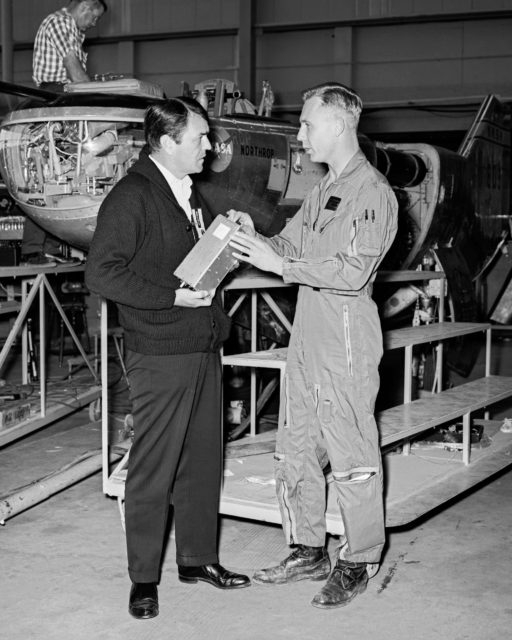
When the family moved to Ontario, he enrolled at the Sarnia Collegiate Institute and Technical School (SCITS) where he showed an aptitude for maths and science. In 1938, he joined the 102nd Royal Canadian Army Cadet Corps. The year after saw him with the Royal Canadian Artillery, 14th (Midland) Field Battery of the 2nd Canadian Infantry Division.
Doohan did so well he became a Commissioned Lieutenant with the 14th Field Artillery Regiment of the 3rd Canadian Infantry Division. In 1940, he was sent to England for further training.
Fast forward to D-Day – the Allied Invasion of France on June 6, 1944. The British, Americans and Canadians were each assigned a portion of France’s Normandy beaches.
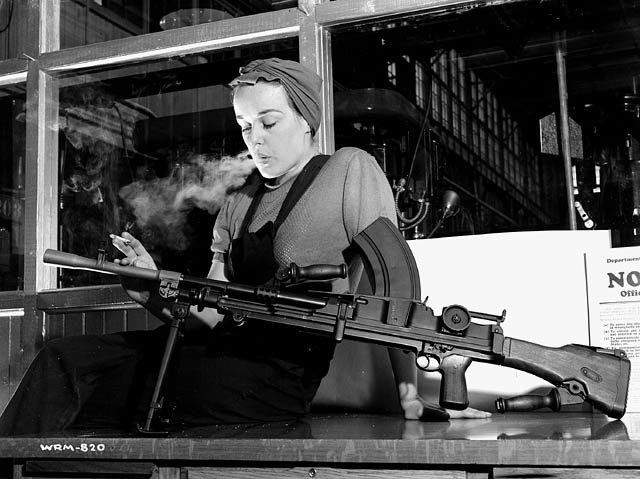
The Canadians were allocated the area from the village of Courseulles all the way to Saint-Aubin-sur-Mer – codenamed Juno Beach. Doohan’s division was to secure the Caen-Bayeux road and take the Carpiquet Airport, west of Caen.
It would not be easy. Facing them were two battalions of the German 716th Infantry Division. There were also troops from the 21st Panzer Division holed up near Caen. As a final precaution, the Germans had strewn the beaches with anti-tank mines.
The Allies had prepared. The night before, their planes had blasted the German positions. As the landings would happen before dawn the next day, the Canadians would not be visible. Or so the thinking went.
It did not turn as planned. The aerial bombardment had not been as effective as the Allies had hoped due to lousy weather and poor visibility – the pilots could not hit their targets. The coastal defenses at Juno were almost unscathed.
It got worse. Rough weather and high waves delayed the landings until well after the sun had risen on June 6. No cover of darkness.
Out at sea, Doohan felt queasy, but it was not because of what lay ahead. He later told the Associated Press, “We were more afraid of drowning than (we were of) the Germans.”
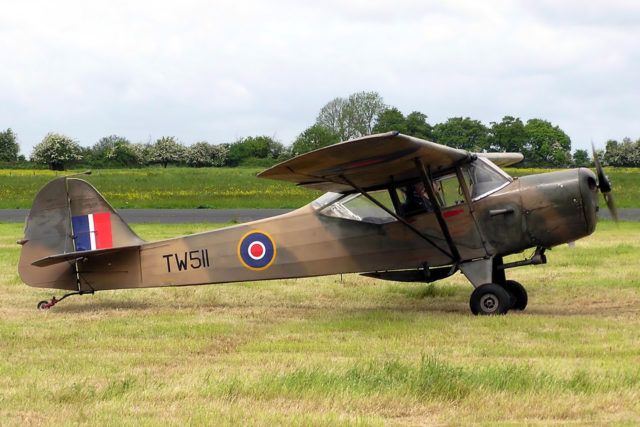
It would not last. The first Canadians reached Juno Beach at 7:35 AM and were cut down. Fortunately for them, the HMS Ajax had bombed Juno earlier, doing more damage to the coastal defenses than the planes had. After two hours, they had swept aside most of the Germans on their stretch of the beach.
Doohan led his men across the sands and got lucky. Despite the anti-tank mines beneath their feet, none went off, as the men were not heavy enough to activate them. As they made their way to higher ground, Doohan managed to take out two German snipers – his first kills of the war.
By noon, they had secured their positions. They could rest, as well as deal with their dead and wounded. There was, however, a problem.
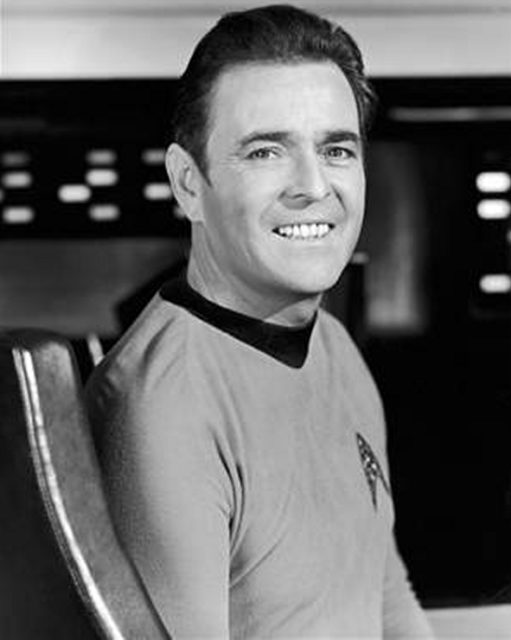
The beach was so thick with Canadians the later arrivals could not advance. As darkness fell, there was a risk they would end up shooting at each other – which was exactly what happened; not just at Juno Beach, but also at the other landing sites.
At about 11:20 that evening, Doohan finished a cigarette and patted the silver cigarette case he kept in his breast pocket. It had been given to him by his brother as a good luck charm… and a good thing, too.
Some ten minutes later, he was walking back to his command post when he was shot. Six times. By a Bren Gun. The first four bullets slammed into his leg, the fourth whacked him in the chest, while the sixth took off his right middle finger.
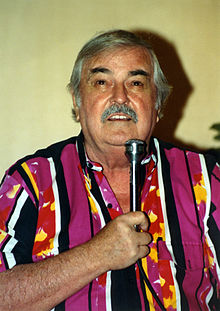
It was not a German sniper. He had been shot by a nervous, trigger-happy Canadian sentry. Fortunately, the cigarette case stopped the bullet aimed at his chest. Doohan later joked it was the only time being a smoker saved his life.
After recovering, he learned to fly a Taylorcraft Auster Mark IV plane for the 666 (AOP) Squadron. By then, he was an Officer with the Royal Canadian Artillery, supporting the 1st Army Group Royal Artillery at RAF Andover, Hampshire.
In early 1945, he flew his plane between two telegraph poles to prove it could be done. He got into trouble for that, and everyone called him the “craziest pilot in the Canadian Air Force.”
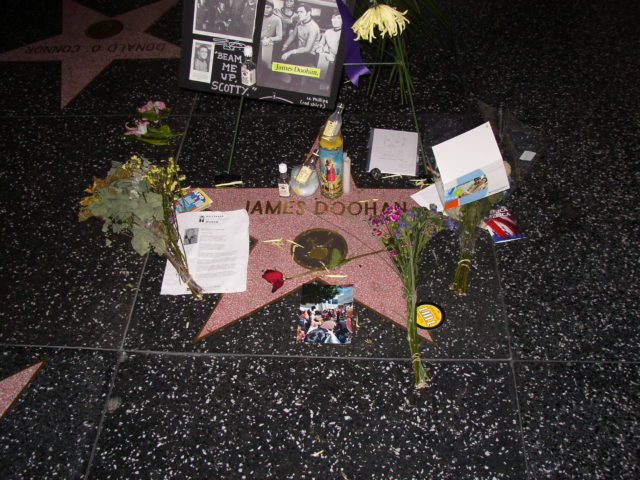
After the war, he returned to Canada where he heard a radio drama. Believing he could do a better job than the voice actors, Doohan took up drama and earned a scholarship to New York City.
His first job was with CBC radio on January 12, 1946. He would go on to do 4,000 shows on radio, 450 on TV, and earn a reputation as the most versatile voice actor in the business.
It was in 1965, however, that he indeed entered history when he landed the role of Montgomery “Scotty” Scott in Star Trek. As well as playing the role of Chief Engineer for the Starship Enterprise, Doohan also helped develop the Klingon and Vulcan languages.
He became so iconic that fans credit him with their interest in engineering, astronomy, and other technical fields. Among these was the engineer-turned-astronaut, Neil Armstrong, who personally thanked Doohan in 2004.
Doohan died in 2005. To honor him, the SpaceLoft XL rocket took some of his ashes into space. Two years later, the Scottish town of Linlithgow claimed him as one of their own with a predictive commemorative plaque. “Predictive,” because it claims he will be born there on 2222.
